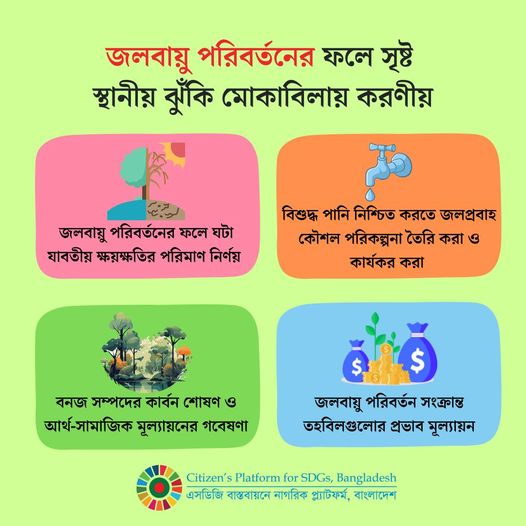Policy Brief 08: Dealing with the Manifestation of Localised Vulnerabilities of Climate Change

Geographical location at the approach of the Bay of Bengal, land structure involving low-lying terrains, great rivers, and the socioeconomic dynamics of coastal, riverine, and remote communities, have all combined to make Bangladesh the 7th most climate-vulnerable country in the world. The impacts are being manifested in various forms. Frequent changes in climate parameters have meant that the days are becoming increasingly hotter in summer compared to the historical average. Also, the number of warmer days is on the rise. The late onset of a shortened rainy season is, at present, a common phenomenon. Frequency of storm surges and wind pressure have also increased. Such erratic variations of climatological parameters are causing more frequent and more intense natural disasters, i.e., flash floods, regular floods and riverbank erosion in the northern districts; flash floods and thunderstorms in the north-eastern Haor districts; drought in the north-western districts; waterlogging in the south-west coast; cyclones and storms in the south-east coast; and salinity intrusion in the southern belt of Bangladesh.
While the abovementioned rapid-onset (flood, riverbank erosion, cyclones, etc.) and slow-onset (sea level rise, salinity intrusion) climate change events are adversely affecting local communities in a variety of ways, in all such cases, it is the marginalised groups within the affected population who tend to be impacted the most. More particularly, this includes the women, children, young people, river-dependent communities and coastal farmers. Among these left-behind people, persons with disabilities and transgender identities, ethnic minorities, Dalits and Harijans suffer relatively more because of their specific difficulties and low coping capacities. The adverse consequences are exacerbated because of insufficient resources, weak support measures and limited funds available to address adaptation challenges for mitigation of negative impacts.
- Publisher: Citizen Platform
- Website: https://bdplatform4sdgs.net/knowledge_product/policy-brief-08-dealing-with-the-manifestation-of-localised-vulnerabilities-of-climate-change/?fbclid=IwY2xjawE9DDFleHRuA2FlbQIxMAABHcBz0ihmUyWCoDd0pWTSYe4pfTFoRazx--V3rgbM5hws6p7iGg0RSdhfpA_aem_I-3QfMFIW6TfsZqRjvwMJQ
- Author(s): Citizen Platform Download

